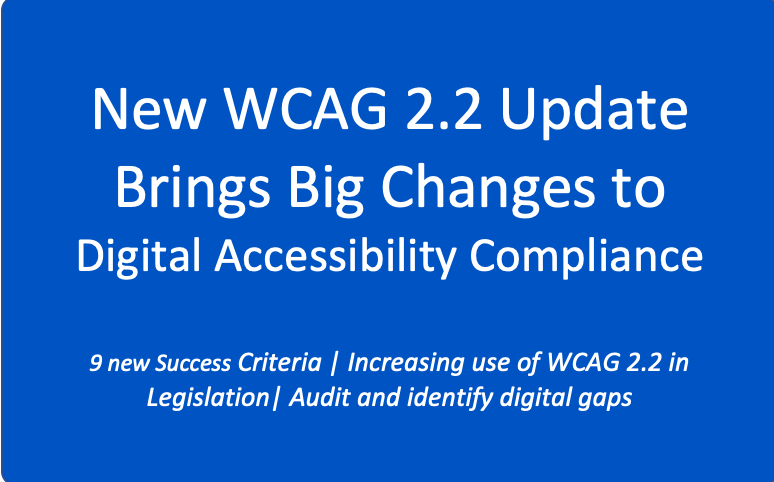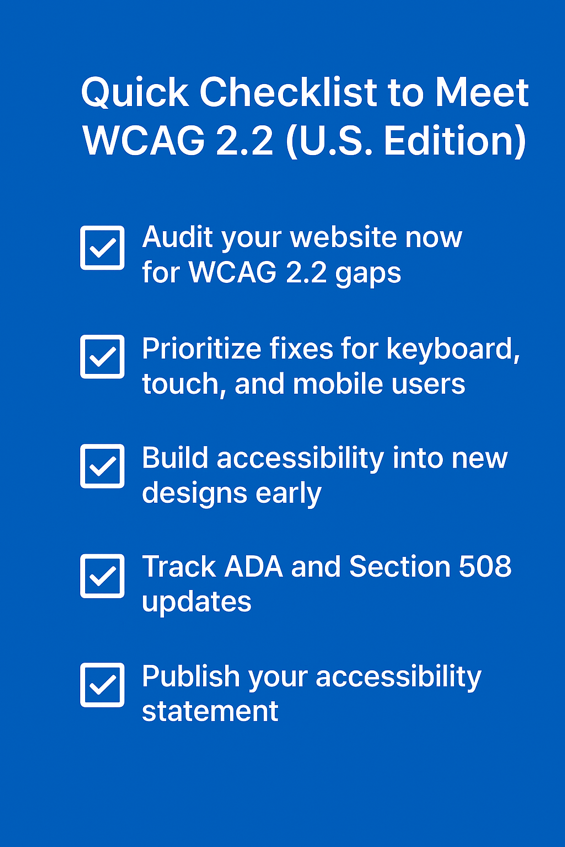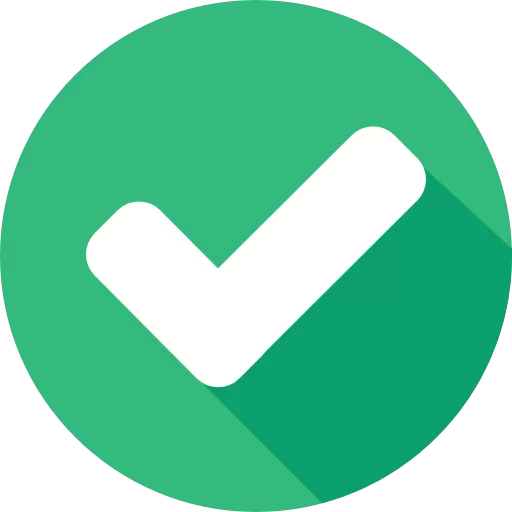
New WCAG 2.2 Update Brings Big Changes to Digital Accessibility Compliance

.png)

A major shift in digital accessibility standards has just arrived and organizations need to take note. On May 6 2025, the World Wide Web Consortium formally reaffirmed the status of WCAG as the highest standard for accessibility in websites.
Read this to find out what the update really means and what steps you should take next.
What’s changed in WCAG 2.2?
The core version was first launched in October 2023. However, the May 2025 update reiterates its importance and signals that it is now the official reference point for accessibility compliance.
Key changes include:
• Nine new “success criteria” to close accessibility gaps around keyboard focus visibility, dragging movements, target size for pointer input, consistent help systems and more.
• Intact backwards compatibility: If your website meets WCAG 2.2, it automatically follows the earlier versions of WCAG 2.1 and WCAG 2.0.
• Regulatory alignment is gaining pace: In many regions digital-accessibility laws are now referencing WCAG 2.2. Organizations must prepare to meet this public procurement requirement.
Why U.S. businesses and digital agencies should take WCAG compliance seriously
The May 2025 reaffirmation of WCAG 2.2 is a signal for U.S. agencies, design firms and digital service providers. This version is now the de facto benchmark for digital accessibility and compliance.
You are already behind on accessibility expectations if your agency or clients are still working with WCAG 2.0 or 2.1 standards. The U.S. Department of Justice (DOJ) recently finalized the new ADA Title II rule. It mentions the WCAG web accessibility requirements which are the next step. Agencies that adapt early will stay ahead of both federal and enterprise procurement standards.
(Source: DOJ ADA Title II Final Rule, 2024)
This update is especially relevant for U.S. digital agencies because:
• Government and enterprise RFPs increasingly expect WCAG AA conformance.
• Accessibility maturity is becoming a differentiator in agency selection. It is important for clients in healthcare, education, SaaS and public-sector work.
• Search visibility and better UX. Websites with accessibility best practices perform stronger in search rankings.
• Rising legal exposure: accessibility-related lawsuits under the ADA and Section 508 continue to rise each year. Serial litigants target websites and apps that fail to meet current standards.
WCAG 2.2 compliance brings credibility and competitiveness. Proactive agencies will be better equipped to deliver future-proof digital experiences for their clients.
Delaying WCAG testing may risk lost contracts, avoidable legal costs and reputational setbacks. It can be prevented with early action and expert guidance.
Related Reading: WCAG Checkers cannot save you from lawsuits-The smarter way to audit
Partner with certified accessibility consultants like ADACP to audit, remediate, and maintain compliance under WCAG 2.2. It is the fastest route to ensure your projects adhere to the latest U.S. accessibility standards.
Quick Checklist to Meet WCAG 2.2 (U.S. Edition)
Audit your digital content now against the new WCAG 2.2 criteria.

Schedule a 30-minute WCAG consultation to check that upcoming features and redesigns are built to meet WCAG 2.2 from the start.
Final Word
The May 2025 update is a wakeup call for organizations with a digital footprint. Those who move early will find compliance smoother and brand trust stronger. Now is the time to step up if your website or app currently only follows older accessibility guidelines.
Run an audit against WCAG 2.2 to make sure your digital experience reflects where the web is headed.

A major shift in digital accessibility standards has just arrived and organizations need to take note. On May 6 2025, the World Wide Web Consortium formally reaffirmed the status of WCAG as the highest standard for accessibility in websites.
Read this to find out what the update really means and what steps you should take next.
What’s changed in WCAG 2.2?
The core version was first launched in October 2023. However, the May 2025 update reiterates its importance and signals that it is now the official reference point for accessibility compliance.
Key changes include:
• Nine new “success criteria” to close accessibility gaps around keyboard focus visibility, dragging movements, target size for pointer input, consistent help systems and more.
• Intact backwards compatibility: If your website meets WCAG 2.2, it automatically follows the earlier versions of WCAG 2.1 and WCAG 2.0.
• Regulatory alignment is gaining pace: In many regions digital-accessibility laws are now referencing WCAG 2.2. Organizations must prepare to meet this public procurement requirement.
Why U.S. businesses and digital agencies should take WCAG compliance seriously
The May 2025 reaffirmation of WCAG 2.2 is a signal for U.S. agencies, design firms and digital service providers. This version is now the de facto benchmark for digital accessibility and compliance.
You are already behind on accessibility expectations if your agency or clients are still working with WCAG 2.0 or 2.1 standards. The U.S. Department of Justice (DOJ) recently finalized the new ADA Title II rule. It mentions the WCAG web accessibility requirements which are the next step. Agencies that adapt early will stay ahead of both federal and enterprise procurement standards.
(Source: DOJ ADA Title II Final Rule, 2024)
This update is especially relevant for U.S. digital agencies because:
• Government and enterprise RFPs increasingly expect WCAG AA conformance.
• Accessibility maturity is becoming a differentiator in agency selection. It is important for clients in healthcare, education, SaaS and public-sector work.
• Search visibility and better UX. Websites with accessibility best practices perform stronger in search rankings.
• Rising legal exposure: accessibility-related lawsuits under the ADA and Section 508 continue to rise each year. Serial litigants target websites and apps that fail to meet current standards.
WCAG 2.2 compliance brings credibility and competitiveness. Proactive agencies will be better equipped to deliver future-proof digital experiences for their clients.
Delaying WCAG testing may risk lost contracts, avoidable legal costs and reputational setbacks. It can be prevented with early action and expert guidance.
Related Reading: WCAG Checkers cannot save you from lawsuits-The smarter way to audit
Partner with certified accessibility consultants like ADACP to audit, remediate, and maintain compliance under WCAG 2.2. It is the fastest route to ensure your projects adhere to the latest U.S. accessibility standards.
Quick Checklist to Meet WCAG 2.2 (U.S. Edition)
Audit your digital content now against the new WCAG 2.2 criteria.

Schedule a 30-minute WCAG consultation to check that upcoming features and redesigns are built to meet WCAG 2.2 from the start.
Final Word
The May 2025 update is a wakeup call for organizations with a digital footprint. Those who move early will find compliance smoother and brand trust stronger. Now is the time to step up if your website or app currently only follows older accessibility guidelines.
Run an audit against WCAG 2.2 to make sure your digital experience reflects where the web is headed.



.svg)
.svg)
.svg)

.webp)
























.svg)

.svg)